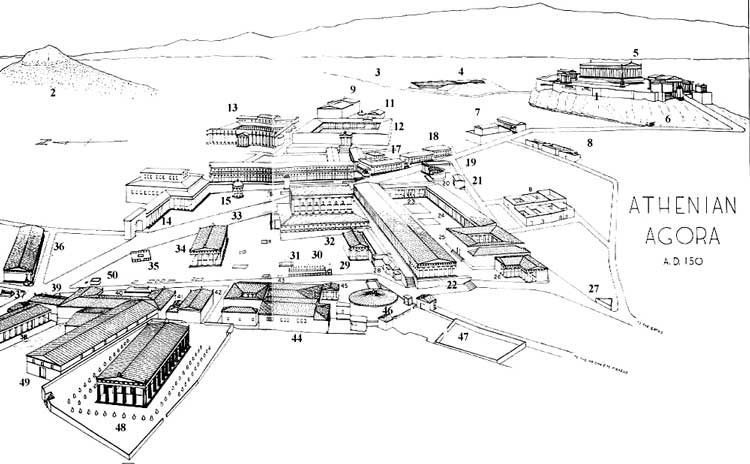|
|
36 Poikile Stoa Greek for "Painted Porch". This is the porch were the Greek philosopher Zeno of Citium used to teach, toward the beginning of the 3rd century BC, the first principles of what would become known as a result as "Stoic" philosophy, from the Greek word "stoa", meaning "porch". It included paintings of Micon of the Battle of Marathon Micon was a Greek painter and sculptor in the middle of the fifth century B.C. He was closely associated with Polygnotus of Thasos, in conjunction with whom he adorned the Stoa Poikile (“Painted Portico”), at Athens, with paintings of the battle of Marathon and other battles. He also painted in the Anaceum at Athens. The painting on the third wall is not intelligible to those unfamiliar with the traditions, partly through age and partly because Micon has not represented in the picture the whole of the legend. When Minos was taking Theseus and the rest of the company of young folk to Crete he fell in love with Periboea, and on meeting with determined opposition from Theseus, hurled insults at him and denied that he was a son of Poseidon, since he could not recover for him the signet-ring, which he happened to be wearing, if he threw it into the sea. With these words Minos is said to have thrown the ring, but they say that Theseus came up from the sea with that ring and also with a gold crown that Amphitrite gave him. See also Timarete This article incorporates text from the 1911 Encyclopædia Britannica, which is in the public domain. List of ancient Greek sculptors Retrieved from "http://en.wikipedia.org "
 |
|
|||||||||||||||||
